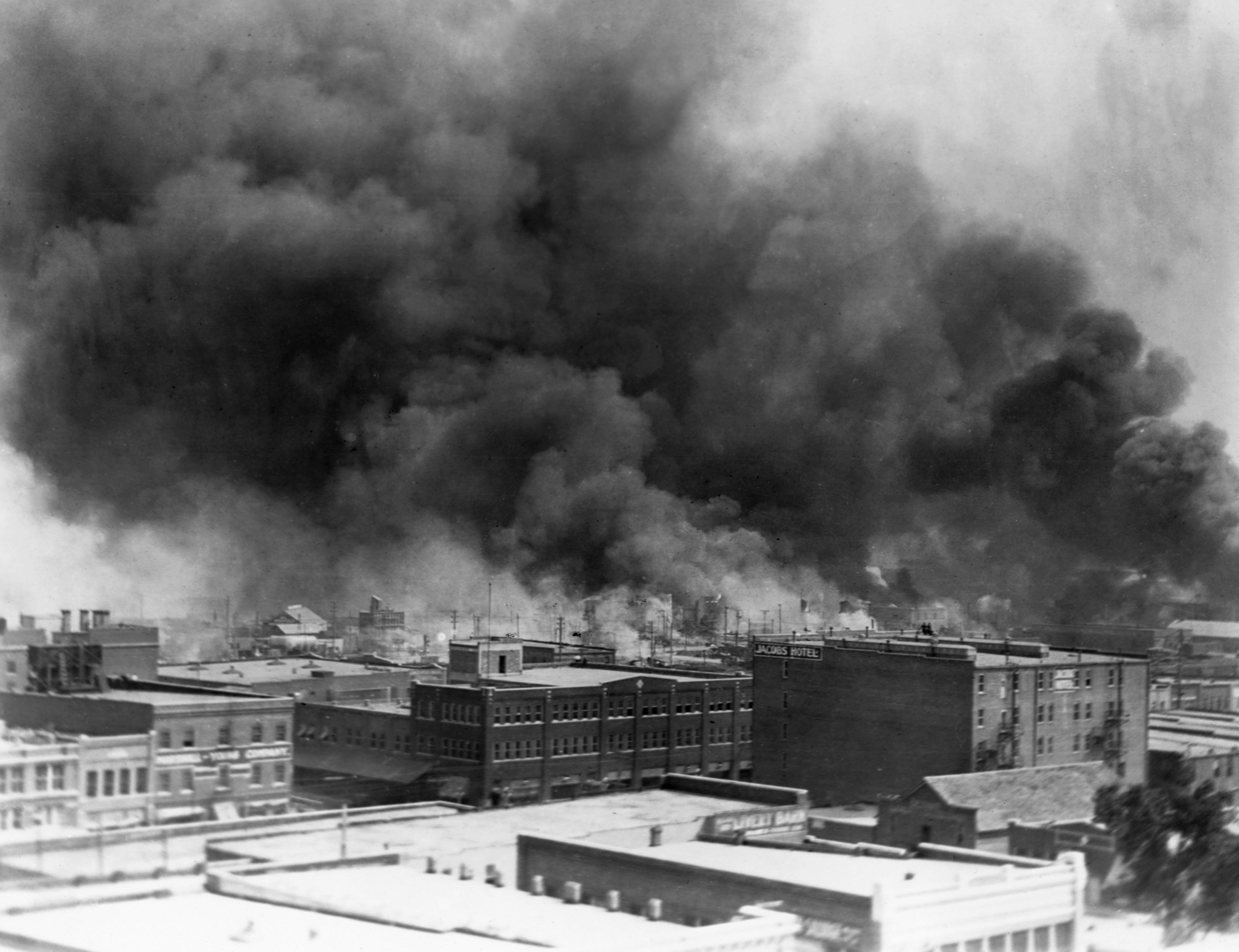
105-year-old Black woman sues Tulsa for Black Wall Street massacre
By Mark PygasSept. 8 2020, Updated 8:26 a.m. ET
In 1921, a mob of white residents, many of them deputized and given weapons by local officials, killed as many as 300 Black people in Tulsa, Oklahoma. The massacre began when 19-year-old Dick Rowland, a black shoeshiner, was accused of assaulting Sarah Page in an elevator. Although Page would later choose not to pursue the case, Rowland was taken into custody.
Rumors spread that Rowland was going to be lynched. In response, a group of armed Black men arrived at the jail. The sheriff convinced the men that the police had the situation under control and asked them to leave. But as they left, the white mob attempted to disarm the Black men, and a shootout began. By its end, ten white men and two black men were dead.
As news of the deaths spread, white rioters descended on Greenwood District. The mainly African American district had become so prosperous it had been nicknamed Black Wall Street. Before the National Guard could be called in to impose martial law, some 300 Black people are estimated to have been killed. Around 10,000 were left homeless, and property damage was the equivalent to $32.25 million in 2019.

Black smoke billows from fires during the Tulsa Race Massacre of 1921.
Now, a group of Oklahomans, led by a 105-year-old woman, are suing the city of Tulsa over the incident. The lawsuit alleges that the massacre still overshadows the neighborhood of Greenwood and that inequality in Tulsa today is a direct result of the attack.
The main plaintiff is Lessie Benningfield Randle, 105, who is one of only two known survivors of the massacre still alive. According to her attorneys, Randle still suffers from flashbacks of the incident. They are seeking reparations from the city.
The great-granddaughter of B Stradford, who owned the Stradford hotel in Greenwood, is also a plaintiff along with the grandchildren of people who were killed.
The lawsuit accuses the city of Tulsa, Tulsa county, the then-sheriff of Tulsa county, the Oklahoma national guard, and the Tulsa regional chamber of being involved in the massacre. Lawyers argue that those named “unjustly enriched themselves at the expense of the black citizens of Tulsa and the survivors and descendants of the 1921 Tulsa race massacre."
“The Greenwood massacre deprived Black Tulsans of their sense of security, hard-won economic power and vibrant community,” lawyer Damario Solomon-Simmons said. “[It] created a nuisance that continues to this day. The nuisance has led to the devaluation of property in Greenwood and has resulted in significant racial disparities in every quality of life metric – life expectancy, health, unemployment, education level, and financial security. The defendants in this case have continued the massacre in slow motion for nearly a century.”
A 2001 commission found that the city had conspired with rioters against Black citizens. The commission recommended direct payments to survivors and descendants. However, all attempts to secure reparations have been unsuccessful, with the statute of limitations on the case now expired. Attempts to pay reparations through Congressional action have all failed.
